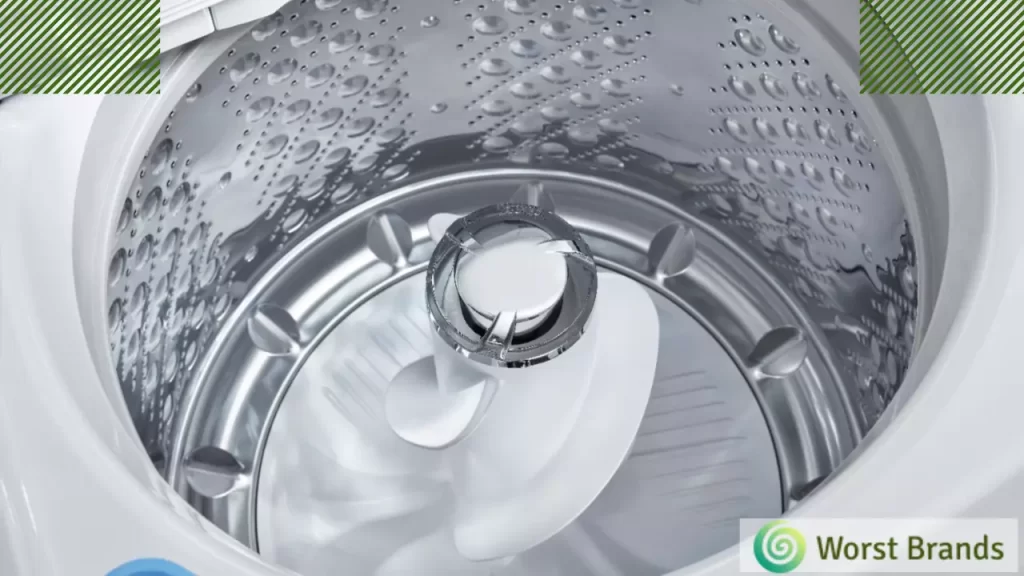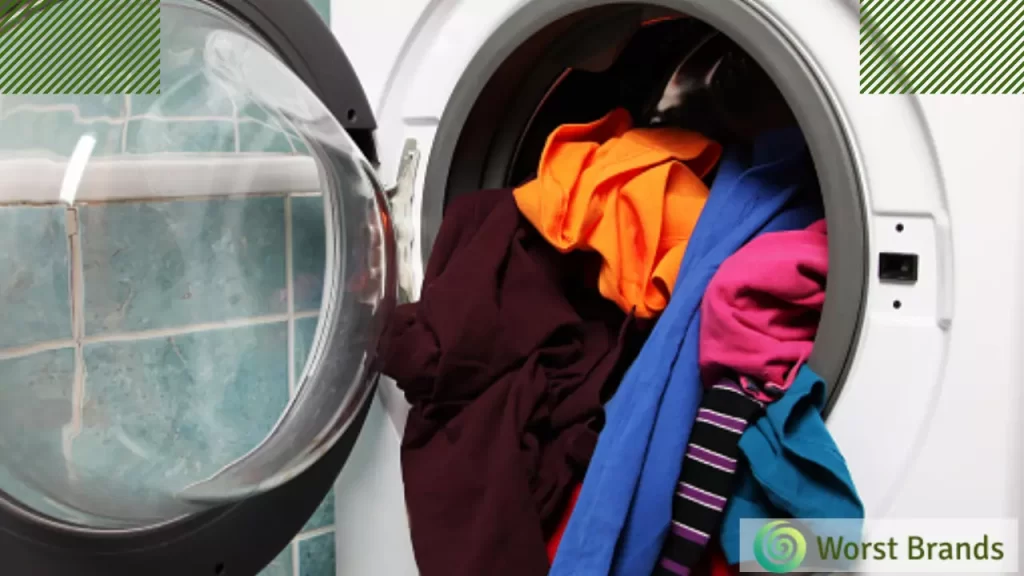If your washing machine won’t spin, there are many potential causes. This can include an electrical problem or a mechanical problem with the machine.
A common reason for a washing machine not spinning is that there is a hair or lint ball stuck in the agitator or one of the holes. It can cause the washing machine to jam or spin out of control. However, you can fix it by clearing the obstructions.
But, the problem might be serious in some cases and may require technical skills to resolve.
With our easy troubleshooting tips below, you can fix this problem with a minimum of effort.
Table of Contents
- How to Fix Washing Machine Not Spinning?
- 1. Check the Power Source:
- 2. Inspect the Agitator:
- 3. Check the Washer Drain:
- 4. Make Sure the Washing Machine is Balanced:
- 5. Check the Water Level:
- 6. Check the Spin Speed:
- 7. Inspect the Wash Load:
- 8. Replace or Readjust the Drive Belt:
- 9. The motor is burnt out:
- 10. The lid switch is broken:
- Conclusion:
- Steven Settles
How to Fix Washing Machine Not Spinning?

When your washing machine won’t spin, here are the important things to look out for.
1. Check the Power Source:
Make sure the power source is plugged into an electric outlet. Also, make sure it isn’t a “dead” or “transformer” outlet.
If you use a “dead” outlet, the washer might not receive enough power to operate properly. If you use a “transformer” outlet, the washer might receive too much power, causing electrical damage.
2. Inspect the Agitator:
The Next thing to do if your washing machine isn’t spinning is to inspect the agitator. Now, look at the holes in the agitator.
If you can’t see any holes, or the agitator doesn’t spin freely, it could mean that there is something trapped inside the agitator. It could be a hairball, or it could be something else like a lint ball, toothpick, piece of fabric, etc.
Also, inspect your washing machine agitator for damage. To examine the agitator, you will need to take it out of the drum. (you may need to hire a repairman for this)
The agitator should be smooth and free from scratches. If it is damaged, replace the agitator.

3. Check the Washer Drain:
The washer drain is a vent pipe that allows water to drain from the bottom of the washer. If there’s no drain pipe, then you might need to replace the pump.
A pump could also fail if there is a blockage in the drain pipe.
we have covered this issue in detail, you can read our article here: Washing Machine Not Draining.
4. Make Sure the Washing Machine is Balanced:
The next thing you should do is make sure the washer is balanced. If a washing machine is not balanced, one of the metal rods inside will not touch the floor or the top of the tub. The washer will be lighter on one side than it will be on the other.
It is possible that an unbalanced washer won’t be able to spin. So, it is important to place your washing machine on a balanced surface.
5. Check the Water Level:
The water level should be just below the drain opening. If the water level is too high, the agitator won’t be able to spin freely.
If the water level is too low, the agitator might get stuck under the water and not be able to move up and down.
Every time you use your washing machine, check the water level. Also, read your owner’s manual to see how often you should add water to your washer.
6. Check the Spin Speed:
Now, check the spin speed. Is it high or low?
The spin speed on your washer should be between 1,000 and 2,000 RPM. Anything higher than this and your agitator will get hot and could melt. Also, a spin speed of less than 1,000 RPM will delay the cleaning process.
7. Inspect the Wash Load:

Make sure the load of laundry you put into your washing machine is clean and free of lint, dirt, grass clippings, pet hair, and food particles.
If your wash load contains any of these items, the agitator won’t be able to get to them and the washing machine won’t be able to do a proper job of cleaning your clothes.
8. Replace or Readjust the Drive Belt:
If it’s a mechanical problem, the first thing you should check is the drive belt. It will be located inside the washer (under the top loaders) or inside the agitator (under the bottom loaders).
If it’s not installed properly or if it’s worn, then this will cause your washing machine to stop spinning. The solution is easy.
Just replace it or readjust it so that it makes contact with the appropriate part of the motor. Make sure you remove the old belt before you put the new one on.
9. The motor is burnt out:
The motor of the washing machine is the part that actually spins the tub. If the motor is burnt out, you might find it difficult to diagnose the problem.
It is very likely to cause a number of different problems like slow spinning, or even no spinning at all. A burnt-out motor will result in no water flow and no noise.
When this happens, there will be a steady, low, constant hum, like a radio or CD player. If the motor is burned out, the drum of the machine will stop rotating as well. However, you can easily replace it at a hardware store.
However, if you plan to buy new, check out the list of the washing machine brands to avoid first.
10. The lid switch is broken:
The lid switch is a little plastic thing that tells the washing machine when the top of the lid is open. If this switch is defective, the washer will continue to run even if the top of the lid is closed.
This will cause a lot of wear and tear on the machine and shorten its life. If the switch is defective, you will see a steady, dull red glow around the edges of the switch. This is a warning sign that the switch is about to burn out.
To save the switch, remove it from the machine and disconnect the two wires that come out of it. Next, gently pry the switch up and away from the washer.
If you want to read about washing machine troubleshooting tips for a specific brand, then check out:
Conclusion:
So, these are the basic problems that can occur with your washing machine. The most common problem that occurs with washers is the faulty drain valve. When the drain valve gets stuck or clogged, it makes the water level too high or too low.
I hope that this guide helped you find the answer to your problem with your WASHING MACHINE NOT SPINNING ISSUE. We know that there are many different models of washing machines out there. And, some of them might have more complex problems than others.
If you are still having problems, then we suggest you contact a professional or the manufacturer’s repair center.

Steven Settles is an ISCET-certified master in appliance repair. He has aced the National Appliance Service Technician Certification Exam, showcasing his exceptional diagnostic and repair skills. With an in-depth understanding of the latest repair technologies and a keen eye on evolving industry standards, Steven is a go-to expert for any appliance issue.